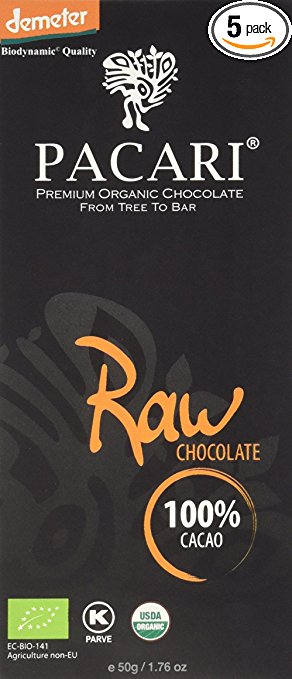Products |
Chocolate is good for you — if it’s dark chocolate
By
Published: May 15, 2018
Category:
Food and Wine
I was raised to equate chocolate with sin. “I really shouldn’t,” one of my mother’s friends would say, and then she’d nibble at the corner of a piece of chocolate as if having more would suddenly turn her into Tubby Tessie. Even now, if I buy a Snickers bar, I feel guilty.
Wrong. Wrong. Wrong.
A piece in the Harvard Gazette opened my eyes… and my mouth.
Many studies have shown that chocolate has health benefits. An analysis of several studies that included data on over 500,000 participants found that those who regularly eat dark chocolate (two to three 30-gram servings per week) had a lower risk of developing diabetes, heart disease, and strokes. In another study of over 2,000 participants, the more chocolate they reported eating (up to twice per week), the less coronary artery plaque they had. And the studies go on and on… We have a pretty good idea that chocolate is good for your cardiovascular health.
This most recent study looked at the effect of milk vs. dark chocolate on three types of visual perception: visual acuity, large and small letter contrast sensitivity. The researchers found that there were improvements in all measures two hours after ingestion of a 47-gram dark chocolate bar (72% cacao).
And this is where dark chocolate shines. Because of this:
Dark chocolate may help to protect the heart. Dark chocolate contains up to 2-3 times more flavanol-rich cocoa solids than milk chocolate. Flavanols have been shown to support the production of nitric oxide (NO) in the endolethium (the inner cell lining of blood vessels) that helps to relax the blood vessels and improve blood flow, thereby lowering blood pressure. Flavanols in chocolate can increase insulin sensitivity in short term studies; in the long run this could reduce risk of diabetes…. Other observational studies suggest a link between high cocoa or chocolate intake of 6 grams daily (1-2 small squares) and a reduced risk of heart disease and mortality, possibly in part by reducing blood pressure and inflammation.
Things to know:
— A true dark chocolate will never have sugar listed first in the ingredients. It should always be below the cocoa ingredients.
— Dark chocolate has a higher proportion of flavanols than milk chocolate. A higher percentage of cacao (cocoa) means a higher amount of flavanols. The bar is generally set at 80 percent.
— Some chocolates are labelled gluten-free. This is odd, as chocolate never contained gluten.
A cautionary note: “Research is still ongoing about the effects of dark chocolate on the heart and how it affects overall health, but there is evidence to show that because of its antioxidants, it can be part of a healthy diet,” says Nieca Goldberg, MD, cardiologist, Director of the Joan H. Tisch Center for Women’s Health at NYU Langone Medical Center. “I tell my patients about an ounce a day can help with their overall health, as part of a well-balanced diet rich in fruits, vegetables, and whole grains, especially if it replaces more indulgent cravings. However, people should remember that more isn’t better, and to make sure they watch portion sizes.”
These are generally rated the best.
Pacari Ecuadorian Organic Dark Chocolate. Raw 100%
Lindt 90% Cocoa Supreme Dark Chocolate Excellence Bar
Ghirardelli Chocolate Intense Dark Squares, Midnight Reverie
Green & Black’s Organic Dark Chocolate. 85% Cacao
Montezuma’s Dark Chocolate Absolute Black. 100% Cocoa
Organic Dark Chocolate 85% Cacao
Endangered Species Panther Dark Chocolate (88%)
Taza Chocolate Wicked Dark
Taza is probably the least-processed chocolate you can find. THE USDA organic chocolate combines just cocoa beans and sugar.
Righteously Raw 83% Pure Dark Bites
BONUS RECIPE
You can sprinkle dark chocolate on dried berries, nuts, or both for added benefits:
1 bag quality dark chocolate chips, like Ghirardelli (which is about 60% cacao).
Dried cranberries, cherries, or other fruit
Crushed pistachios or almonds (toasted or plain)
Pour the chocolate chips into a glass microwave-safe bowl.
Add one tablespoon oil that doesn’t have flavor, like coconut oil. Any will do, really. Stir it into the chips.
Place bowl in microwave and heat on high for no more than 30 seconds at a time, stirring after each time, until chocolate is melted.
Pour onto two cookie sheets that have been fitted with a silicone baking mat or nonstick parchment paper, dividing evenly. Spread the chocolate out so that it’s about 1/4 to 1/2 a centimeter thick.
Then go crazy. Sprinkle whatever you want on there: dried fruit, crushed nuts, maybe a sprinkle of sea salt (if you’re not watching your salt intake).
Bark will last a few days wrapped in plastic or wax paper.


